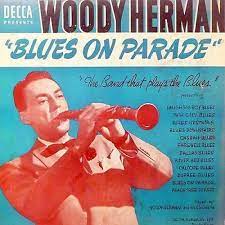
Daily Dose Of Jazz…
Joe Bishop was born November 27, 1907 in Monticello, Arkansas and learned piano, trumpet, and tuba when he was young. He also played flugelhorn and mellophone. He attended Hendrix College and played professionally with the Louisiana Ramblers in 1927, including in Mexico.
Bishop played with Mart Britt, Al Katz, and Austin Wylie before joining the Isham Jones band for five years. He was a founding member of Woody Herman’s band in the 1930s, but he contracted tuberculosis in 1940 and had to leave the group. He was rehired by Herman as a staff arranger later in the 1940s, and his arrangements and compositions were recorded frequently by Herman, appearing on some 50 of Herman’s albums.
As a performer, Joe played with Cow Cow Davenport and Jimmy Gordon’s Vip Vop Band, but retired from studio work due to his health in the 1950s. Joe quit music and opened a store in Saranac Lake, New York, and later retired to Texas. His compositions include Midnight Blue, Woodchopper’s Ball, and Blue Prelude with Gordon Jenkins.
Tubist, pianist and composer Joe Bishop, whose work has been covered by musicians as diverse as Ten Years After and Lawrence Welk, transitioned on May 12, 1976.
More Posts: composer,history,instrumental,jazz,music,piano,tuba
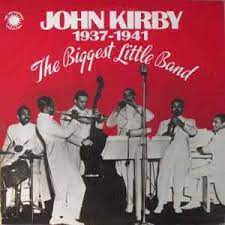
Daily Dose Of Jazz…
William “O’Neil” Spencer was born on November 25, 1909 in Cedarville, Ohio and began his career with local bands in the Buffalo, New York area. In 1931, he began working for Al Sears before joining up with the Mills Blue Rhythm Band from 1931 to 1936, which later became the Lucky Millinder Orchestra.
However, it wasn’t until 1937 after joining the popular John Kirby Sextet that he truly became an influential force on the jazz scene. Unfortunately, Spencer had to leave for a time in 1941 due to tuberculosis. However, during the late Thirties he recorded with numerous other groups, including Red Allen, Sidney Bechet, Jimmie Noone, Johnny Dodds, Frankie Newton, Milt Hearth, and Lil Armstrong.
He left the Kirby sextet in 1941 to work briefly with Louis Armstrong, but returned in ’42. His career, however, was cut short in 1943 when he contracted tuberculosis. Drummer and singer O’Neil Spencer transitioned on July 24, 1944 in New York City at the age of thirty-five.
More Posts: drums,history,instrumental,jazz,music
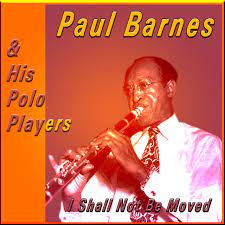
Daily Dose Of Jazz…
Paul D. “Polo” Barnes was born November 22, 1901 in New Orleans, Louisiana. He attended St. Paul Lutheran College and began playing alto saxophone in 1919. He and Lawrence Marrero formed the Original Diamond Band, which would become known as the Young Tuxedo Band.
He was with Kid Rena in 1922, the Maple Leaf Orchestra in 1923, and Papa Celestin’s Original Tuxedo Band later that year. Celestin’s group recorded his tune My Josephine, which became quite popular. Polo played with Chick Webb in 1927, toured with Jelly Roll Morton in 1928-29 and with King Oliver three times in 1927, 1931, and 1934–35.
In 1932 and 1933 Barnes led his own band. He would go on to play with Chester Zardis and Kid Howard through the Thirties. He played in Algiers, Louisiana in a Navy band from 1942 to 1945, then returned to work with Celestin from 1946 to 1951.
Moving to California he left music from 1952 to 1957. Returning to New Orleans in 1959 he played with Paul Barbarin. In 1962 to 1965 Polo joined the Young Men From New Orleans band that played on a riverboat at Disneyland. He came back home again in 1964 and played at Preservation Hall and Dixieland Hall. He toured Europe in 1973 and 1974, but poor health ended his career in 1977.
Clarinetist and saxophonist Polo Barnes, who was the brother of clarinetist Emile Barnes and was a mainstay of the New Orleans jazz scene during the jazz age, transitioned on April 3, 1981.
More Posts: bandleader,clarinet,history,instrumental,jazz,music,saxophone
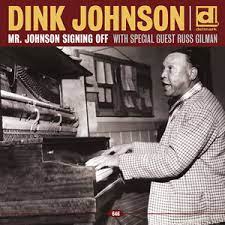
Daily Dose Of Jazz…
Ollie “Dink” Johnson was born in Biloxi, Mississippi on October 28, 1892. He was the younger brother of double bassist William Manuel “Bill” Johnson. He worked around Mississippi and New Orleans before moving to the western United States in the early 1910s. He played around Nevada and California, often with his older brother. He played with the Original Creole Orchestra, mostly on drums.
He made his first recordings in 1922 on clarinet with Kid Ory’s Band. He made more recordings in the 1940s and 1950s, mostly on piano, although Johnson recorded some one-man band sessions, playing all three of his instruments by over-dubbing.
His piano style was influenced by his brother-in-law Jelly Roll Morton, and his clarinet playing by Larry Shields. The tunes he wrote included The Krooked Blues, recorded by King Oliver and So Different Blues.
Pianist, clarinetist, and drummer Dink Johnson, who played in the Dixieland genre, transitioned in Portland, Oregon on November 29, 1954.
More Posts: bandleader,clarinet,drums,history,instrumental,jazz,music,piano
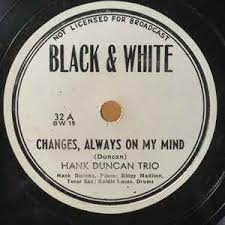
Daily Dose Of Jazz…
Hank Duncan was born Henry James Duncan on October 26, 1894 in Bowling Green, Kentucky. Little is written about his childhood, however he is better known for his work with Fess Williams, King Oliver, Tommy Ladnier, Sidney Bechet, Charles “Fat Man” Turner, and many others.
He toured extensively with Fats Waller. Duncan was sometimes referred to as The Little Man From Memory Lane.
Pianist Hank Duncan transitioned on June 7,1968 in Long Island, New York.
More Posts: history,instrumental,jazz,music,piano



